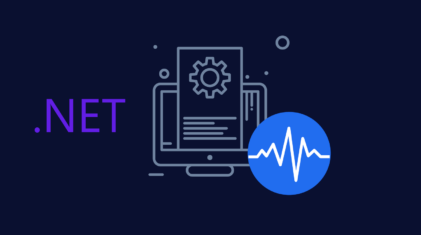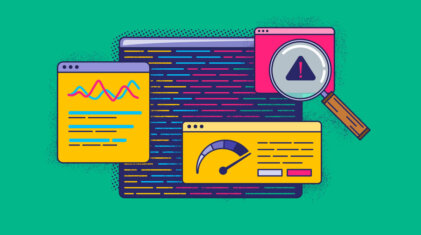.NET Logging: Best Practices for your .NET Application
Web application logging best practices Logging monitoring is a key requirement of any production application. .NET Core offers support for outputting logs from your application. It…
Whether you are just starting your observability journey or already are an expert, our courses will help advance your knowledge and practical skills.
Expert insight, best practices and information on everything related to Observability issues, trends and solutions.
Explore our guides on a broad range of observability related topics.


Distributed microservices and cloud computing have been game changers for developers and enterprises. These services have helped enterprises develop complex systems easily and deploy apps faster.
That being said, these new system architectures have also introduced some modern challenges. For example, monitoring data logs generated across various distributed systems can be problematic.
With strong log monitoring tools and strategies in your developer’s toolkit, you’ll be able to centralize, monitor and analyze any wealth of data. In this article, we’ll first go over different log management issues you could potentially face down the line, and how to effectively overcome each one along the way.
Monitoring vast data logs across a distributed system poses multiple challenges. When talking about a full-stack observability guide, here are some of the most common log management issues, and ways to fix them.
Overcomplexity is one of the primary causes of inefficient log systems. Traditional log monitoring tools are designed to handle data in a single monolithic system. Therefore, cross-platform interactions and integrations require the aid of third-party integration apps.
In the worst-case scenario, you might have to implement different integration procedures for different platforms to understand disparate outputs. This complicates your log monitoring system and drives up maintenance costs.
Coralogix resolves this with a simple, centralized, and actionable log dashboard built for maximum efficiency. With a clear and simple graphical representation of your logs, you can easily drill down and identify issues.
Traditional legacy and modern cloud computing systems often produce vast amounts of unstructured data. Not just that, these different data formats are often incompatible with each other, resulting in data silos and hindered data integration efforts. The incompatibility between various data formats poses significant challenges for businesses in terms of data management, analysis, and decision-making processes.
Data volume also drives up the cost of traditional monitoring strategies. As your system produces more data, you will have to upgrade your monitoring stack to handle the increased volume. Having a modern log observability and monitoring tool can help you manage this data effectively.
You need an automated real-time log-parsing tool that converts data logs into structured events. These structured events can help you extract useful insights into your system’s health and operating conditions.
Log data is extremely useful for monitoring potential threats, containing time-stamped data of system conditions when incidents occur. However, the lack of visibility in distributed systems can make systems logs with bugs difficult to pinpoint.
Therefore, you often have to spend a lot of time shifting through large amounts of data to system bugs. The longer it takes to find the bugs, the higher the likelihood that your system might face downtime. Modern distributed systems make this even harder, since system elements are scattered across many platforms.
Coralogix’s real-time log monitoring dashboard helps you streamline this by providing a centralized view of the layers of connections between your distributed systems. This makes it possible to monitor and trace the path of individual requests and incidents without combing through tons of data logs.
With this, you can greatly improve the accuracy of your log monitoring efforts, identify and resolve bugs faster and reduce the frequency of downtimes in your system.
Threat hunting and incident management is another common log monitoring problem. Traditional log monitoring software makes detecting threats in real time and deflecting them nearly impossible.
In some situations, you only become aware of a threat after the system experiences downtime. Downtime has massive detrimental effects on a business, leading to loss of productivity, revenue and customer trust. Real-time log monitoring helps you resolve this by actively parsing through your data logs in real time and identifying unusual events and sequences.
With a tool like Coralogix’s automated alerting system and AI prevention mechanism for log management, you can set up active alerts that are triggered by thresholds. The AI sets off alerts when your system encounters a previously unknown threshold. Thus, you can prevent threats before they affect your system.
Log monitoring is an essential task for forward-facing enterprises and developers. The simpler your log monitoring system, the faster you can find useful information from your data logs.
However, the data size involved in log management might make it challenging to eliminate problems manually. There are different log monitoring dashboards that can streamline your entire log monitoring journey. Choose the right one for your business.

Web application logging best practices Logging monitoring is a key requirement of any production application. .NET Core offers support for outputting logs from your application. It…

The Internet of Things (IoT) has quickly become a huge part of how people live, communicate and do business. All kinds of everyday things make up…

Whether it’s Apache, Nginx, ILS, or anything else, web servers are at the core of online services, and web log monitoring and analysis can reveal a…